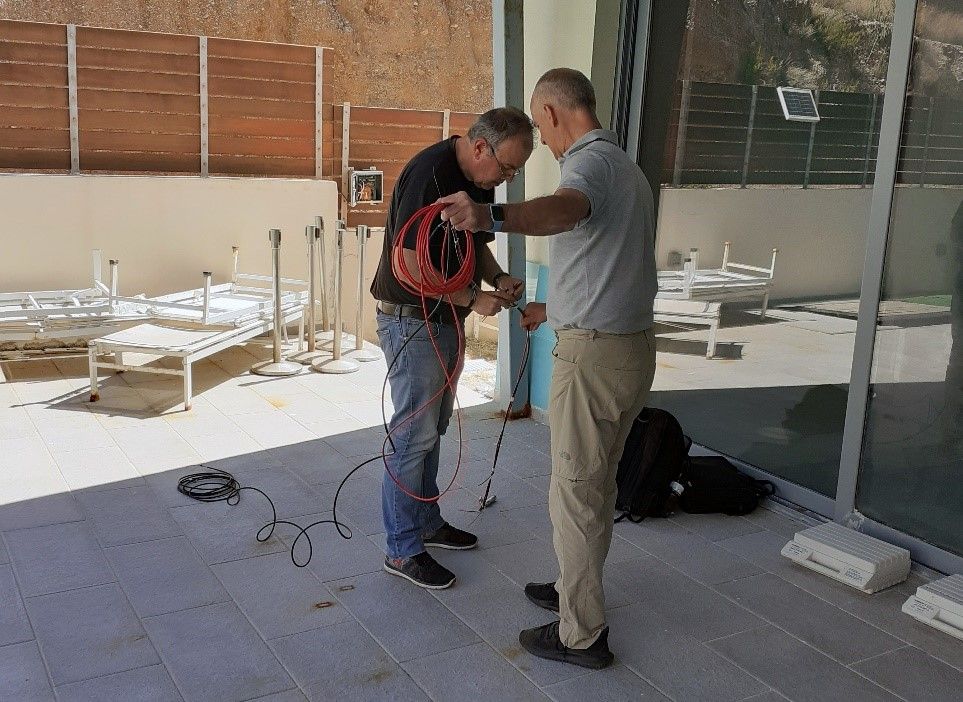On Friday, June 12, 2020, a team from the Hellenic Survey of Geology and Mineral Exploration (H.S.G.M.E.), consisting of M. Xenakis, G. Vougioukalakis and Ch. Mylonas, installed at the Loutraki Spa spring in Corinthia the first monitoring station for the continuous recording and real-time telemetric transmission of parameters of fluids from Geothermal Fields and Thermal Mineral Resources.
This action was carried out within the framework of the sub-project “Actions for the Rational and Sustainable Utilization of Geothermal Energy - GEOTHERM” of the project “Studies and research supporting the energy sector of industry and entrepreneurship - OPYGEK”, implemented by the Department of Geothermal Energy & Thermal Mineral Resources of the H.S.G.M.E. and structured into four individual activities.
One of these activities is the “Long-term Monitoring of Thermal Mineral Resources & Geothermal Fields of Greece”, which aims to ensure data collection for the optimal and sustainable use of these resources by enterprises active in this field. Within this framework, continuous and periodic monitoring of utilized geothermal fields and thermal mineral resources is planned — such as the fields of Nigrita, N. Erasmio, Eratino, Nisyros, Santorini, Aristino and the thermal mineral resources of Aidipsos, Kamena Vourla–Ypati (Fthiotida), Loutraki (Corinthia), Aridaia, Kaiafas (Ilia), Agistro, Sidirokastro, Eleftheres (Kavala), Traianoupolis (Evros), as well as the islands of Lesvos, Ikaria and Samothraki.

Figure 2: Telemetry Software Interface of the Geothermal Field Monitoring Station
The expected results of this activity include:
- Sustainable management of geothermal fields utilized for various applications.
- Coverage of all operational geothermal fields with a continuous monitoring network to ensure their rational utilization.
- Collection, storage in databases, evaluation, and processing of primary data.
- Assessment of all critical and useful parameters for their sustainable management.
The continuous monitoring network consists of stations that continuously record, primarily, the fluid temperature and the groundwater level in geothermal reservoirs. These data are then transmitted through specialized software via the mobile network to a dedicated server operated by the Department of Electronic Governance of the H.S.G.M.E.. All data are stored in a relational database (RDBMS). For 2020, the installation of eight new stations in various parts of the country has been planned.


